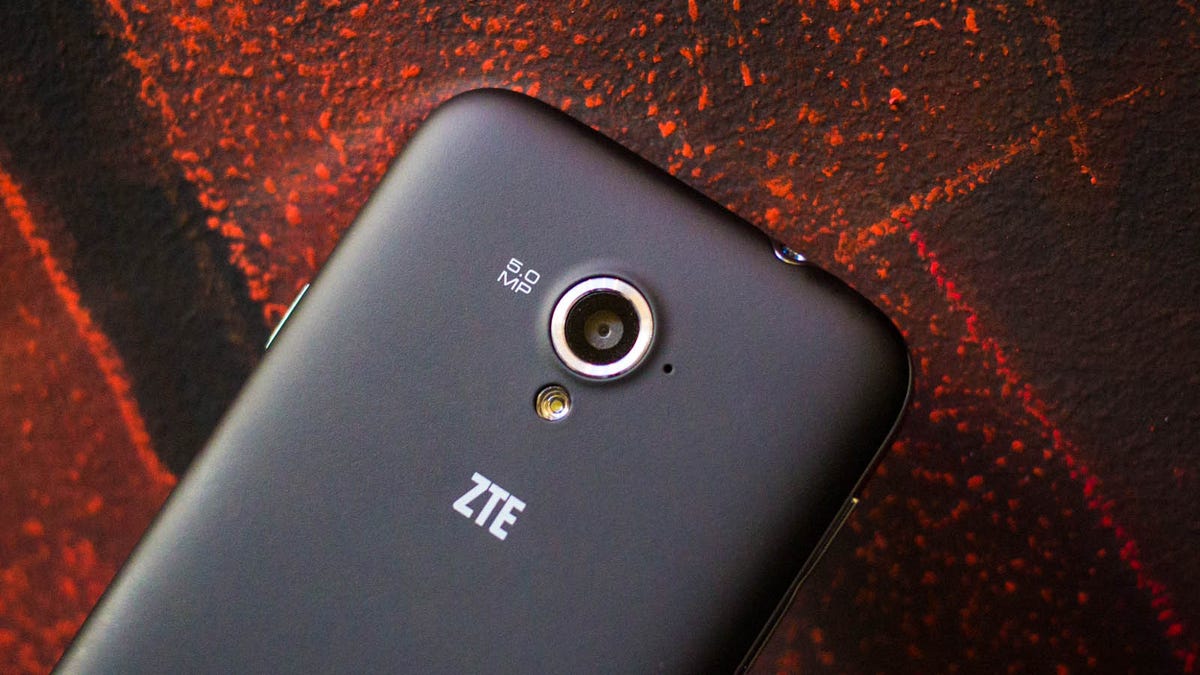US buyers: It's time to consider ZTE
With its relentless outpouring of both mid- and high-end phones offered by well-known carriers, ZTE is steadily carving out its presence in the US market.
Editors' note, March 16, 2014: This post has been updated with additional analysis from MWC 2014.
ZTE may not be on the tip of everyone's tongue when it comes to popular mobile phone companies in the US, but in a few years, it just might be.
In addition to building a steady brand presence in China and in emerging markets (indeed, at this year's Mobile World Congress, it debuted two ultra-affordable Firefox phones, the Open C and the Open II, for example), ZTE continues to make incremental but noticeable strides when it comes to expanding its brand presence in the US.
As the fourth biggest phone vendor in the world, ZTE has a ways to go if it wants to carve a bigger space for itself in the US market. But as far as its products are concerned, the two factors attributing to ZTE's slow climb upward are its focus on premium smartphones, and its carrier relationships.
Rise of the premium handsets
Nearly two years ago, ZTE said that it was going to invest $30 million to increase its brand awareness in the US, specifically with the help of new high-end phones, and Hagen Fendler as the company's global chief design director.
This foray into premium phones began with the launch of the Grand S, a sleek and chic 5-inch Android device. The Nubia 5 followed suit, sporting an austere aesthetic and several photo editing features.
Unfortunately, neither phone found a US carrier to partner with (they ended up being sold unlocked through Amazon), and they weren't anywhere near close to beating out the competition -- especially when considering the incredibly affordable Google Nexus 5.
However, both phones still had solid build quality and performance, and they indeed marked a new direction in ZTE's mobile unit. Without overreaching, ZTE proved that it can make a respectable marquee phone, and would continue to do so with the stylish Grand S II, Nubia 5S and 5S Mini, which premiered at this year's CES.
ZTE is also following along with the super-sized "phablet" movement that has struck so many phone manufacturers recently. At MWC, it debuted the expansive Grand Memo II LTE, a thin 6-inch smartphone with a stylish design and Android 4.4.
A bit of carrier love
Though the aforementioned devices weren't picked up by US networks (and none have been announced for the upcoming handsets from CES and MWC), that doesn't mean all other ZTE handsets are being ignored.
In addition to the plethora of mid-range phones available on small-time carriers like Cricket Wireless, U.S. Cellular, and Aio Wireless, users can purchase ZTE devices from the likes of Sprint (with the Sprint Vital, Force, and Flash), T-Mobile, and Boost Mobile.
True, some of these phones are entry-level, like the T-Mobile Concord, but others -- like the Boost Max -- are slightly more high-end. In fact, the Max was the prepaid carrier's first "phablet" handset, and sports 4G LTE, an 8-megapixel camera, and a 5.7-inch screen.
This is a noticeable change from a few years ago, when seeing a ZTE device on a well-known carrier was few and far between. Though we still have yet to hear about a top-tier ZTE phone on AT&T or Verizon Wireless, it wouldn't be a huge surprise if we see one a few years from now.
A ways to go
Currently in the US, ZTE isn't as popular as manufacturers like HTC, LG, and Motorola, and there's a reason for that. As good as the devices are, they aren't overly-impressive, and I have yet to encounter one that gets me jumping out of my chair.
But seeing how far it has come in the last few years is something I can get excited about. At this year's MWC, ZTE played it smart. Instead of the "spray and pray" method we've seen in years past, where we saw a downpour of ho-hum phones, ZTE debuted only one high-end handset that was thoughtfully crafted, and two entry-level handsets aimed at a precise demographic. This shows the signs of a more deliberate company -- a company that is willing and focused, and above all, a company that's vying hard to be your next smartphone.


